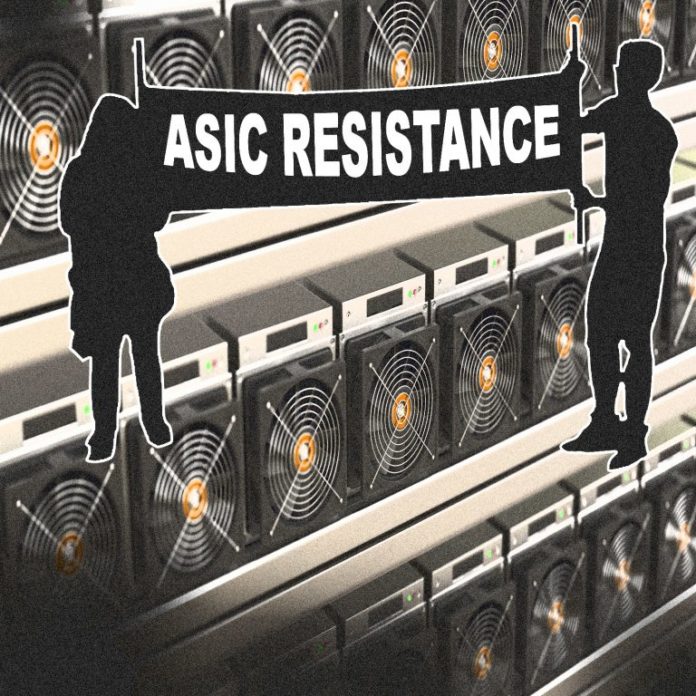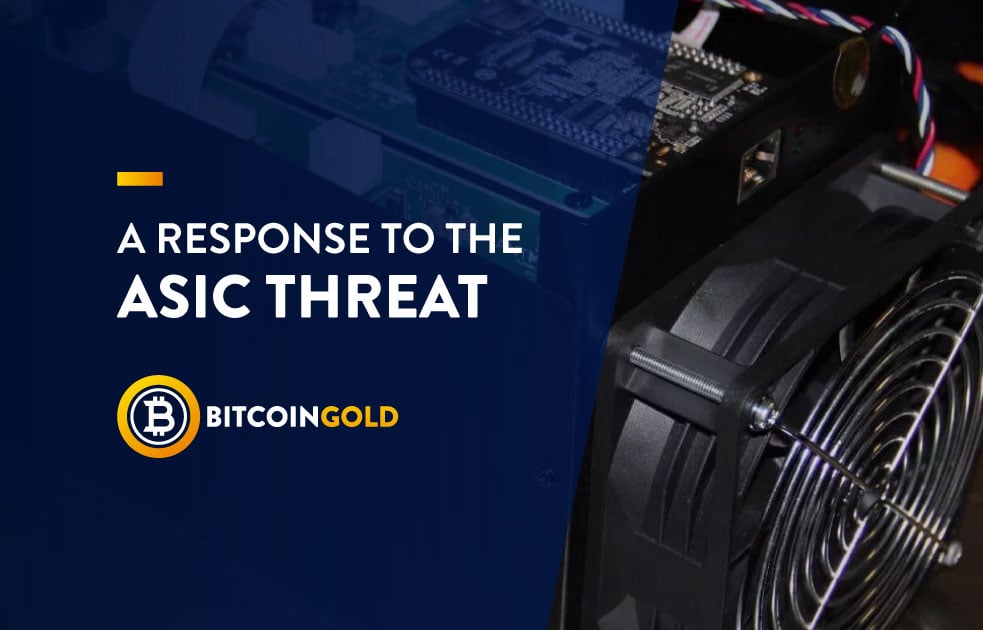
Just recently the Bitcoin Gold (BTG) developers announced the project’s consensus algorithm Equihash was “threatened” in a blog post called “A Response to the ASIC Threat.” In the post, the BTG project’s team members explain that they might change the cryptocurrency’s current Equihash algorithm due to the recent launch of the Antminer Z9 mining rig. The firm Bitmain Technologies has once again produced a device that breaks the mold of digital currency networks that claim to be ‘ASIC resistant.’
Also read: Researchers Find Bitcoin Network 3X More ‘Evil’ Than the Public Internet
The Bitcoin Gold Project Aimed to be a ‘Better Bitcoin’ by Trying to Remain ‘ASIC Resistant,’ but the Idea Failed Miserably With the Launch of the Z9 Mini
 Last year a project called Bitcoin Gold (BTG) forked the Bitcoin Core (BTC) protocol in hopes of creating a more fair and decentralized mining environment that would remain ‘ASIC resistant.’ The BTG project basically cloned the BTC codebase (Segwit included), and changed the consensus algorithm from SHA-256 to the Equihash algorithm, a popular mechanism used by the digital asset zcash and others. This week the Bitcoin Gold development team wrote a blog post that detailed a new Equihash mining rig that’s been released to the public “threatens” their dream of a “one CPU one vote” network. The mining rig manufacturer Bitmain has caused a stir throughout multiple cryptocurrency communities, by launching various miners this year that process algorithms most thought were ‘ASIC resistant.’ The latest Antminer Z9 mini was announced on May 3 and costs $1,999 USD per unit and the machine processes an Equihash hashrate of about 10k Sol/s ± 5%.
Last year a project called Bitcoin Gold (BTG) forked the Bitcoin Core (BTC) protocol in hopes of creating a more fair and decentralized mining environment that would remain ‘ASIC resistant.’ The BTG project basically cloned the BTC codebase (Segwit included), and changed the consensus algorithm from SHA-256 to the Equihash algorithm, a popular mechanism used by the digital asset zcash and others. This week the Bitcoin Gold development team wrote a blog post that detailed a new Equihash mining rig that’s been released to the public “threatens” their dream of a “one CPU one vote” network. The mining rig manufacturer Bitmain has caused a stir throughout multiple cryptocurrency communities, by launching various miners this year that process algorithms most thought were ‘ASIC resistant.’ The latest Antminer Z9 mini was announced on May 3 and costs $1,999 USD per unit and the machine processes an Equihash hashrate of about 10k Sol/s ± 5%.
“We are pleased to announce the Antminer Z9 mini, an ASIC miner to mine Equihash-based cryptocurrencies — To prevent hoarding and to let more individuals worldwide get one, we’ve set a limit of one miner per user,” explains Bitmain the day they launched the Z9 mini.

After Feeling ‘Threatened’ by the Z9 the BTG Development Team Plans to Modify or Change the Current BTG Equihash Algorithm
The announcement has shaken development teams who believed their blockchain consensus models would be free from these high-efficiency semiconductors. But now that Bitmain has released the Equihash mining Antminer Z9, the BTG project may attempt to modify or change its consensus algorithm.
“This week, we learned that the dominant specialty crypto mining hardware maker (Bitmain) has released an “ASIC” miner for Equihash, which means it would be able to mine BTG if we were to allow that to happen,” explains the BTG organization.
The Bitcoin Gold dev team is now working to fix this. We’ve been planning to do this for some time – either by modifying how the Equihash algorithm is implemented, or by changing to an entirely different algorithm. Perhaps we’ll do each, over time.

Is ‘ASIC Resistance’ a Pipe Dream?
Bitcoin Gold isn’t the only project that attempted to create an ‘ASIC resistant’ cryptocurrency that failed to meet that goal. The Litecoin (LTC) network utilizes a different hashing algorithm called scrypt, and when the project first launched everyone thought it would never see ASIC miners processing the LTC’s blocks. However, the once claimed ‘ASIC resistant’ Litecoin scrypt algorithm turned out to be minable by application-specific semiconductors and at the time when this was discovered in 2013 it was quite controversial.
Last month Bitmain released its Antminer E3 that processes the Ethhash (an ethereum, ETH) hashing algorithm. The launch of this device sparked a discussion between Ethereum users who wanted to become ASIC resistant quickly. One Ethereum proponent writes “a regularly scheduled PoW change, like Monero” is needed. The Monero (XMR) development team ran into the same situation as a Bitmain produced mining rig was launched before the E3, that mined cryptocurrencies that utilized the cryptonight algorithm.
As far as different types of Proof-of-Work algorithms there hasn’t really been a cryptocurrency yet that has maintained full ASIC resistance. Most people believe the goal to produce an ASIC resistant PoW is a mythical pipe dream as there are warehouses full of ASIC machines that mine these digital currencies that once claimed to be immune from ASICs.
What do you think about the goal to create an ASIC resistant PoW cryptocurrency? Is this goal attainable without going full PoS? Let us know what you think about this project in the comments below.
Images via Pixabay, Shutterstock, Bitcoin Gold blog, and Bitmain Technologies.
Have you seen our new cryptocurrency market caps page Satoshi Pulse? It shows live updated price feeds and market caps for the top 500 coins and there’s no need to refresh for prices. Check out Satoshi Pulse today!
The post Cryptocurrency Projects Aiming to be ‘ASIC Resistant’ Have Little Success appeared first on Bitcoin News.

Bitcoin.com is author of this content, TheBitcoinNews.com is is not responsible for the content of external sites.
Our Social Networks: Facebook Instagram Pinterest Reddit Telegram Twitter Youtube











